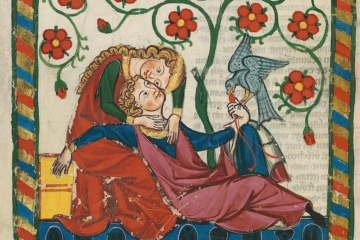by Harry Gulcher, Master of History in Rosewood
The problem of the fractured English Crown came into being only after the Death swept through Europe. The once dominant and prestigious Britannian Empire found itself a mess and the Imperial Crown was destroyed, giving rise to petty Kingdoms, all of them vying for the right to be called the King of Kings.
Five Kingdoms exist in England that could form the Kingdom of England. Those are:
1. Oxford (West Amsterdam)
2. Mercia (Powys)
3. York (Norway)
4. Dover (Chatersberg and London)
5. Cumbria (Northumbria)
Since there is a clear division of power and all Kingdoms are more or less equal, none can be crowned the King of Saxons, since not even London is controlled.
Oddly enough the five Kingdoms regularly met in summits to try and resolve peacefully. War was, it would seem, only the last resort. In the Last Summit, held in 1087 the Kingdoms of Mercia and York were to join together and unite to expel the threat of Dover from the British Isles. The Duke of Sussex, the brother of the King of Dover, did not take kindly to this hostility and left the summit. Oxford, Mercia, and York seemed to stabilize their relations and perhaps even became friendly with each other. This would all be undone a few months before the Princess Eliza of Mercia was to wed Prince Alfred of York. Folktales speak of a secret love between Princess Eliza and the Prince of Oxford, William. The two lovers were found dead after stabbing each other through the heart, forever locked in a loving embrace. In addition to being excellent material for bards to write about, the situation may have been what began the escalation into the War of the English Kings.
The King of Dover, George II, declared war on the Queen of Oxford on the 12th April 1091. Soon enough, the other Kingdoms joined in, to defend against the Norman invader. But despite being allies in the war against Dover, the remaining four Kingdoms distrusted each other and expected a blow to the back as soon as Sussex was theirs, so the declared war on each other. The War of the English Kings was a five-way war to see which Kingdom would be left on top to claim the title of England.
The English Channel
The conflict around the English Channel was centered around Oxford and Dover. Even though Dover had a sizable army, Oxford held the upper hand in the fact that their entire force was on the island, while more than half of Dover’s men were stationed in Normandy. And so Oxford attacked.
The Battle of Sussex, 25th May 1091
On the field of battle, Oxford and Dover were almost evenly matched, Dover’s Sussex regiment was somewhat smaller than Oxford’s army. It was a resounding victory for Oxford that day with them losing 600 and 200 men, while Dover lost 1.700 and 1.000, effectively ending their warring capabilities until reinforcements arrived from the Continent.
The Battle of the English Channel, 6th June 1091
Seeing that their enemy was on the run and knowing that reinforcements would be on their way, Oxford merged its fleet with that of West Amsterdam to attempt to destroy any navy that Dover might have been directing towards Sussex. On the 6th, the two navies finally found each other. True, Dover had the strength in numbers, almost by a 100 ships, but West Amsterdam’s commanders prove invaluable in securing an Oxfordian victory, although with heavy losses. Oxford lost 114, while Dover lost 266 ships to the battle.
The Siege of Kent, 12th September 1091
With their force crushed and their navy knocked out, Dover had no other chance but to bide their time and hope for the best. That hope would not amount to anything. Oxford laid siege to Kent and in 422 days, the defenders surrendered and Oxford gained control over most of South England.
This, plus the recent naval victory gave West Amsterdam the initiative to blockade the Norman ports in hopes to disrupt trade. The move proved decisive as it sowed discontent among the local coastal lords in the region and got them furious with their King who had allowed something like this to come to pass.
On the 7th November 1092, King George II signed a peace treaty, effectively leaving the war.
Central England
Central England saw the war between Mercia and York. The two Kingdoms which attempted to tie an alliance in marriage now found themselves at each other’s throats. Mercia was the first to strike in the Battle of the Valley.
The Battle of the Valley, 15th May 1091
Mercia’s commanders underestimated the Yorkish army and the amount of men and ships they would receive from Norway. This, combined with the fact that the Yorkers used the terrain to their advantage proved decisive. 2.140 Mercians lost their lives that day and another 500 fled from the battle. York on the other hand lost 1.810 and 200. The remainder of Mercia’s army disbanded and formed a countryside militia, aimed at fighting York through unconventional means.
The Siege of Lichfield, 28th August 1091
The Mercians’ hit and run tactics ultimately failed against York and after the 261-day long siege, Mercia’s morale was non-existent.
On the 15th May 1092, Queen Alice I knelt and gave her service to Queen Catherine II.
Even though their allies surrendered, Powys refused to bend the knee, and thus provoked action from the King of York who was quick to divide his forces. King Matthew III split his men into two and sent a smaller contingent to deal with the Welsh Kingdom. Powys stood little chance.
The Battle of Chester, 28th June 1092
The 700 strong Yorkish army had little to fear from the 300 Welshmen from Powys. York lost 60 and 10 men, while the Welsh army was slaughtered, all 300 either dead or deserted. Powys accepted annexation on the 5th July 1092.
Northern England
Sending the larger part of his army to the north was indeed a smart move by King Matthew III, who was able to catch the Cumbrians off guard and deal them a crushing defeat.
The Battle of Bamburgh, 16th June 1091
The Cumbrians had decided to go through Northumberland to strike in the heart of the Yorkish Kingdom. King Matthew III anticipated this and was able to scout out where they had made camp. Under the cover of darkness, they descended and won a victory which almost knocked them out of the war. York lost 645 and 100 men, while Cumbria lost 955 and 400.
The Siege of Bamburgh, 25th June 1091
The Yorkish push did not stop there, they intended on knocking Northumberland out of the conflict entirely. After 118 days of siege, they were able to do so. Northumberland accepted annexation on the 21st October 1091.
The Battle of Cumbria, 30th August 1092
After waiting through a cruel winter and licking their wounds, the two Kingdoms met to do battle once more. The Battle of Cumbria is well known for its use of more modern warfare tactics and equipment that the Oxfordians would later adopt. It was an absolute victory for York who only lost 20 men, while Cumbria lost 1.245 and 250.
Without an army to protect it, Cumbria was weeks away from capitulation. It signed a peace on the 12th November 1092 and lost a part of its land.
The end-all conflict began after the winter of 1092. Oxford and York had previously signed a pact of non-aggression, prohibiting them from attacking each other’s lands. This pact was dissolved once they were the two last standing Kingdoms still competing for the Crown. It’s important to note that Oxford fought only one war against Dover, while York had to deal with Mercia, Powys and Cumbria and Northumberland. Oxford had better rested and more men than York did. If the war had been postponed for another year, the end result could have been completely different.
The Battle of Corby, 21st May 1093
The full forces of both York and Oxford met that day on the field and exchanged heavy blows with each other, but in the end, it was York who pulled back and ordered a retreat. Oxford won and lost 210 and 50 in the process, while York lost 590 and 100. This enabled Oxford to push further and try to beat the winter.
The Battle of Nottingham, 15th June 1093
By using what they had learned from York in their Cumbrian campaign, Oxford was able to secure a second victory which meant their likelihood of victory was greater than ever before. Oxford lost just 120 and 50 men, while York lost 680 and 200.
The Siege of Doncaster, 30th June 1093
Instead of pursuing the weakened Yorkish forces, the Oxfordian commanders decided to besiege Doncaster and await further reinforcements. This strengthened them, but also their enemies, a gamble that ended up fatal for both sides later in the war. Doncaster surrendered after 242 days of siege and Oxford was able to continue their push towards York.
The Battle of Selby, 3rd April 1094
The Oxfordian morale was low after an entire winter of siege still, they marched on. York met them and battle commenced. It ended inconclusively, with neither side winning. York lost 620 and 300 men, while Oxford lost 980 and 200. King Matthew attempted to outmaneuver Oxford, so he pulled back to the north-west, leaving an opening to York, while the Oxfordians accepted.
The Siege of York, 19th May 1094
The siege looked promising, but it was only a rouse by King Matthew III, a gamble. One that would end catastrophically. After 63 days of siege, the Yorkish army came from behind to lift it.
The Battle of Malbis, 17th July 1094
King Matthew III, even though he had the element of surprise and the initiative, fell for the Oxfordian blunders during the battle and ended up losing his crown. The battle was an Oxfordian victory and a decisive one at that. Oxford lost 500 and 100, while York lost 1.200 and 500. They could no longer keep up the fight as their army was destroyed and their lords were at the brink of revolt. Surrender seemed the only logical conclusion. On the 23rd July 1094, King Matthew renounced his crown. With that, the war was over. It would be known by many names. The War of the Five Kingdoms, The War for the English Crown and Bellum ab Anglis Regum by the scholarly. Queen Catherine II was crowned the Queen of Oxford, the only Kingdom in England at the moment. Queen of Queens, Queen of the Saxons, and the English crowned by the English Church. She is the descendant of Alfred if we are to believe their texts. Interesting how young love leads to the deaths of thousands and entire dynasties being removed from power. Change is in the air.


